How to Extend the Life of Your Robot Vacuum
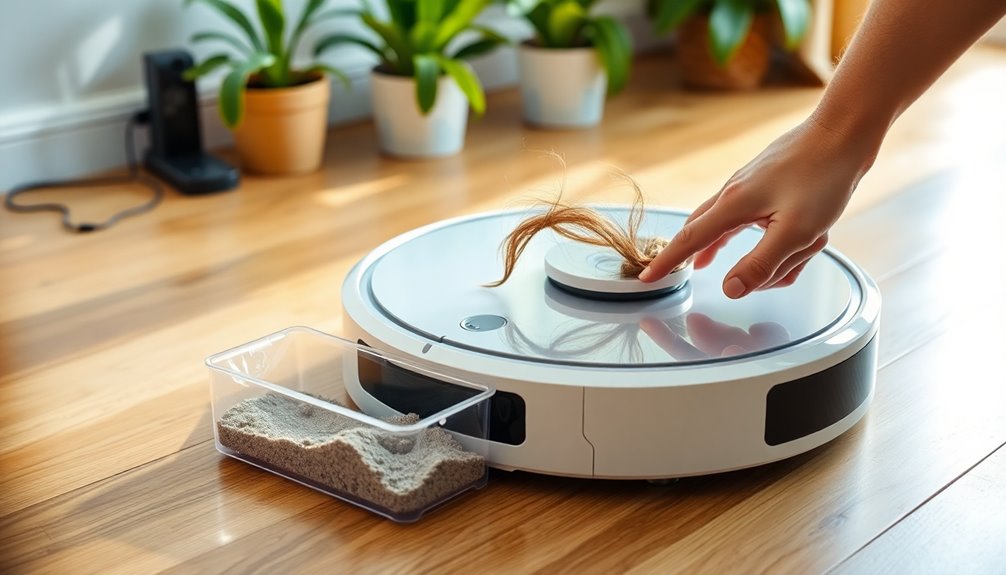
To extend the life of your robot vacuum, adopt a rigorous maintenance routine. Clean the brushes weekly to prevent hair and debris buildup. Check and rinse the filter monthly to maintain suction power, replacing it every 3-6 months as needed. Empty the dustbin after each use to avoid clogs that hinder performance. Regularly update software to optimize navigation and improve features. Store the vacuum in a climate-controlled area to prevent damage, and guarantee it's used only on recommended surfaces. Following these steps will greatly boost durability, and you'll discover further tips to maximize efficiency along the way.
Key Takeaways
- Regularly clean and maintain brushes to prevent damage and ensure effective cleaning performance.
- Check and replace filters every 3-6 months to maintain suction power and efficiency.
- Frequently empty the dustbin to avoid clogs and enhance vacuum performance.
- Store the vacuum in a cool, dry place to protect battery and electronic components.
- Keep software and firmware updated for optimal performance and new features.
Regularly Clean the Brushes
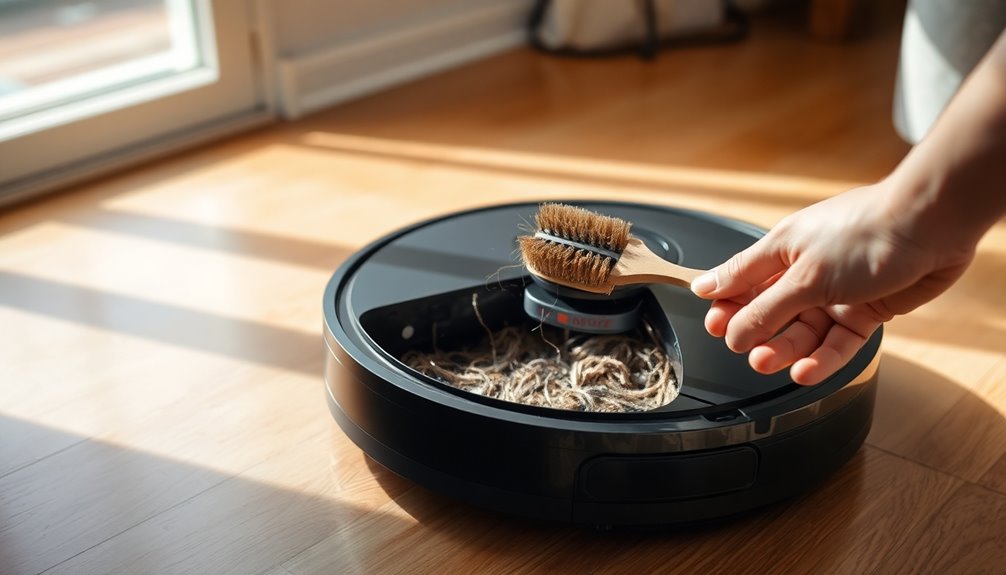
The rotating brushes of your robot vacuum are vital for effective cleaning, as they agitate dirt and debris for peak suction. Regular maintenance of these brushes is important to guarantee superior performance and extend the life of your device.
One of the key brush cleaning techniques involves removing hair, dust, and debris that accumulate over time. You should inspect the brushes weekly; a quick visual check can reveal any buildup that could hinder functionality.
To clean the brushes effectively, detach them from the vacuum and use a pair of scissors to snip away tangled hair. This will help you avoid any damage to the bristles. After cutting, use your fingers to pull away the debris, making sure of a thorough cleaning. Wipe the brush surfaces with a damp cloth to remove any remaining dust.
Additionally, keep an eye on the wear and tear of the brushes. If you notice significant fraying or a decrease in performance after cleaning, it might be time for a replacement.
Brush replacement tips suggest changing them every six months or sooner if you have pets or a high-traffic home.
Maintain the Filter
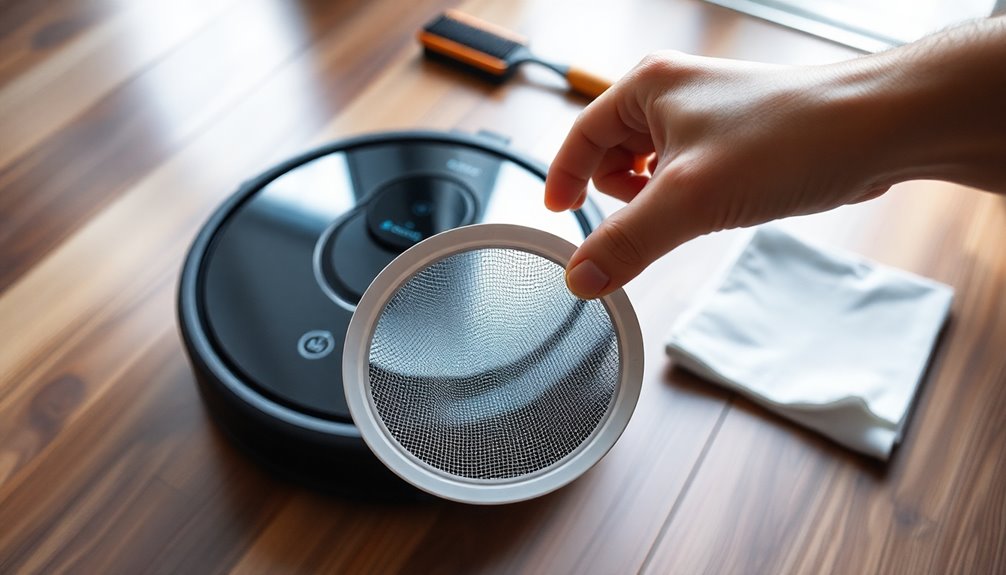
Maintaining the filter in your robot vacuum is just as important as keeping the brushes clean. A clogged or dirty filter can greatly impair your vacuum's performance, reducing suction power and efficiency.
Regular filter cleaning and timely filter replacements are essential to guarantee your robot vacuum operates at its best.
To help you maintain the filter effectively, consider the following key practices:
- Check the filter weekly: Inspect your filter at least once a week, especially if you have pets or carpets, to gauge its cleanliness.
- Clean the filter: Rinse the filter under lukewarm water every month or as recommended by the manufacturer. Allow it to dry completely before reinserting it.
- Replace the filter as needed: Keep an eye on the manufacturer's guidelines for filter replacements. Typically, you should replace it every 3-6 months, depending on usage.
- Avoid using harsh chemicals: When cleaning the filter, stick to plain water. Harsh chemicals can damage the filter material.
- Store a spare filter: Having a backup filter on hand guarantees that you won't have to delay cleaning sessions while waiting for a replacement.
Empty the Dustbin Frequently
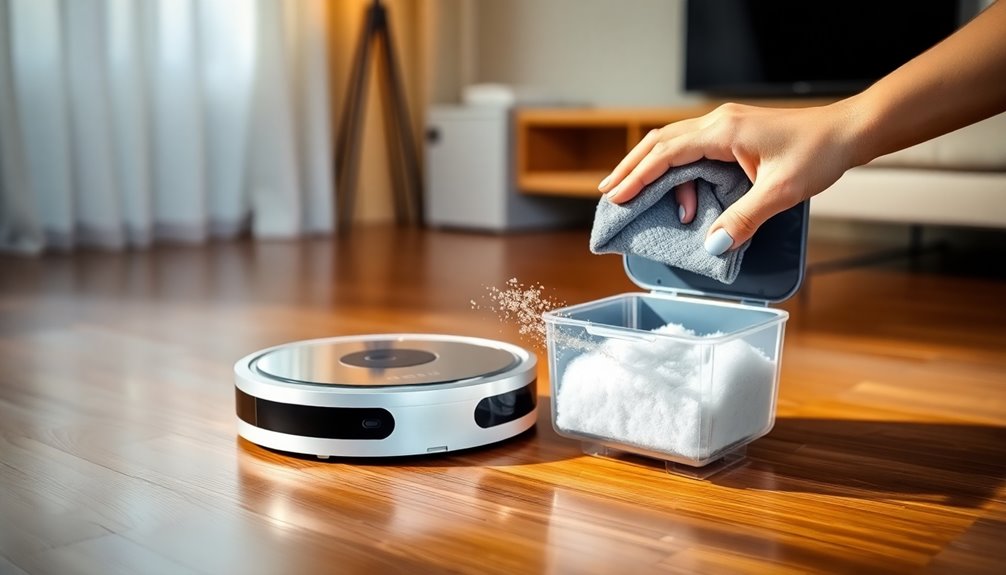
Your robot vacuum's dustbin plays an essential role in its cleaning efficiency, and emptying it frequently is key to maintaining peak performance. A full dustbin not only limits the vacuum's dustbin capacity but also directly impacts its overall vacuum performance. When the dustbin reaches its maximum capacity, the vacuum's suction power diminishes, leading to suboptimal cleaning results.
To guarantee your robot vacuum operates at its best, you should check the dustbin after every cleaning cycle, especially if you have pets or live in a dusty environment. Regularly emptying the dustbin prevents debris buildup, which can clog filters and impair airflow. This practice not only enhances cleaning efficiency but also extends the longevity of your vacuum.
Moreover, consider the type of debris your vacuum collects. Fine particles like dust and pet hair can accumulate quickly, filling the dustbin faster than larger debris. If you notice your vacuum struggling to pick up dirt or leaving behind debris, it may be time to empty the dustbin, even if it doesn't appear completely full.
Incorporating frequent dustbin emptying into your cleaning routine cultivates a sense of ownership and responsibility for your robot vacuum. By maintaining its dustbin capacity, you're investing in the appliance's efficiency and lifespan.
This simple yet effective habit guarantees that your robot vacuum remains a reliable partner in keeping your home clean and comfortable.
Update Software and Firmware
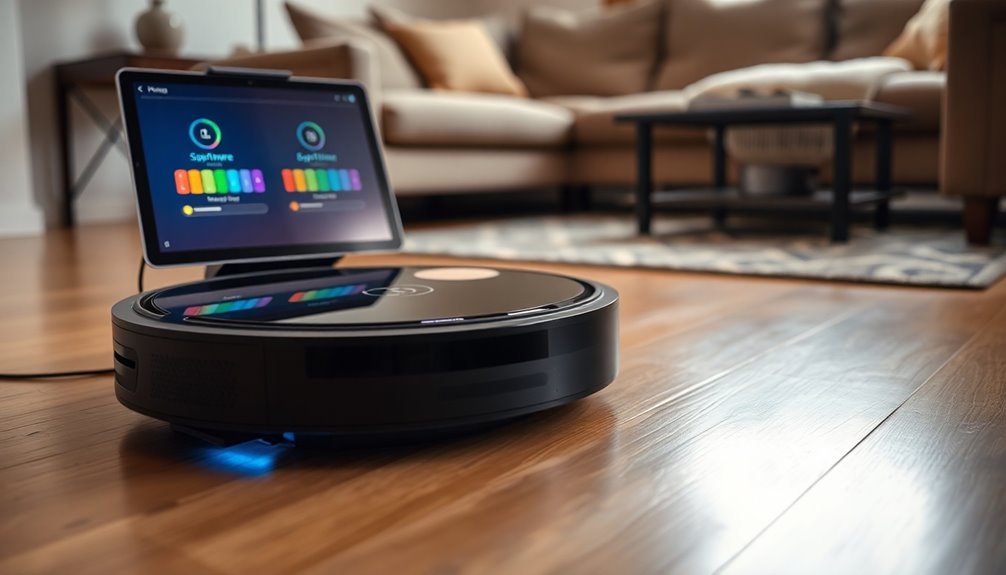
Keeping your robot vacuum's software and firmware up to date is essential for maximizing its performance and capabilities. Regular software upgrades and firmware improvements can lead to enhanced functionality, better navigation, and improved cleaning efficiency. Ignoring these updates can hinder your vacuum's performance, leaving it less effective at tackling dirt and debris.
To guarantee you're getting the most out of your robot vacuum, consider the following points:
- Enhanced Features: Software upgrades often introduce new features, making your vacuum more versatile.
- Bug Fixes: Firmware improvements address known issues, guaranteeing smoother operation and fewer interruptions.
- Optimized Performance: Updates can refine algorithms, improving navigation and cleaning patterns.
- Compatibility: Keeping software current guarantees compatibility with smart home systems and apps.
- Security: Regular updates protect your device from vulnerabilities, guaranteeing your personal data remains safe.
To update your robot vacuum, check the manufacturer's app or website for the latest releases. Connecting your vacuum to Wi-Fi often enables automatic updates, simplifying the process.
Make it a habit to check for updates every few months or whenever you notice performance issues. By prioritizing software and firmware updates, you're not just prolonging your vacuum's life; you're also investing in a cleaner, more efficient home.
Embrace these upgrades, and enjoy the benefits of a robot vacuum that works smarter for you.
Check for Obstructions
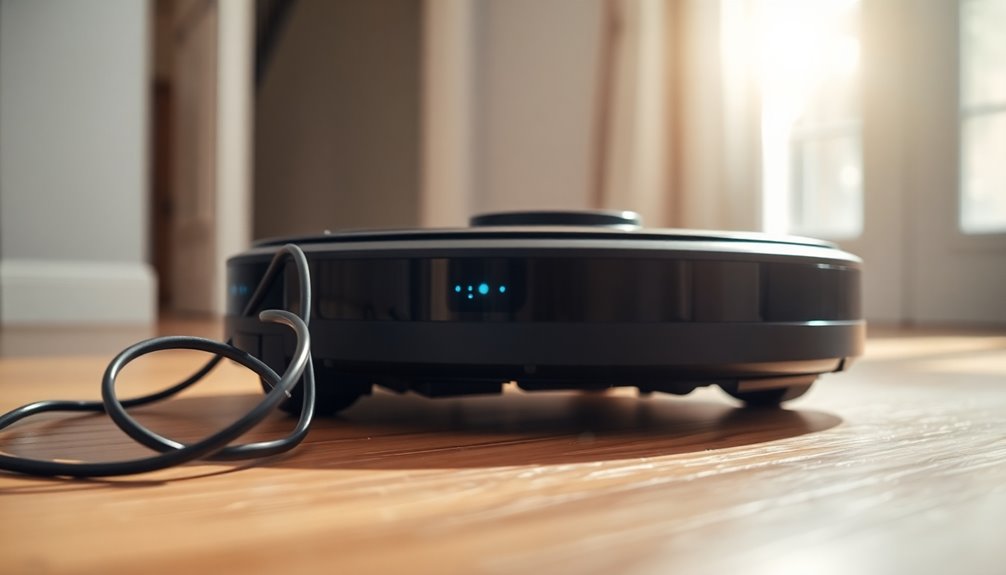
Regularly checking for obstructions is vital for guaranteeing your robot vacuum operates at peak efficiency. Obstructions can considerably hinder the performance of your vacuum, leading to inefficient cleaning cycles and potential damage. Familiarize yourself with common obstruction types, such as cords, furniture, and small objects, which can interfere with the robot's movement and floor mapping capabilities.
To start, inspect the areas your vacuum frequents. Look for stray toys, loose cables, or anything that might impede its path. Even small items, like coins or pet food, can cause the vacuum to get stuck or confused. It's essential to maintain a clear environment, as even minor obstructions can disrupt the floor mapping process, which your robot relies on to navigate effectively.
Next, examine the vacuum itself. Hair and debris can accumulate around the brushes and wheels, creating additional obstruction types that affect performance. Regularly remove any tangled hair and wipe down the sensors to guarantee accurate floor mapping. Keeping these components clean enhances the robot's ability to detect obstacles and navigate around them efficiently.
Lastly, consider your robot vacuum's specific design and features. Some models may have advanced sensors that help avoid obstructions, while others might require more manual intervention. Understanding your vacuum's capabilities will guide you in maintaining a suitable cleaning environment.
Store Properly When Not in Use
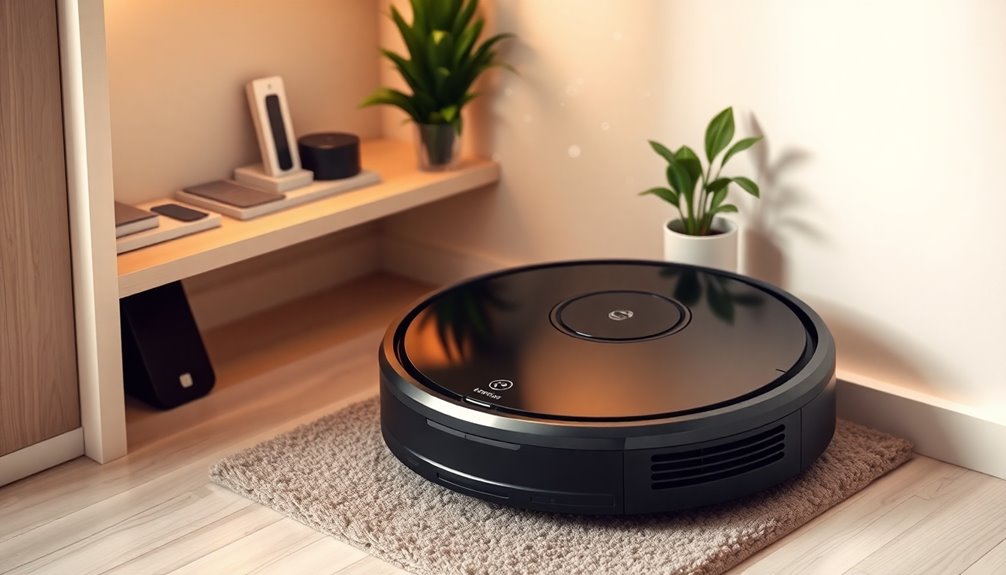
Properly storing your robot vacuum when it's not in use greatly contributes to its longevity and functionality. By maintaining the right conditions, you can maintain its performance and extend its lifespan.
Here are some key considerations for effective storage:
- Temperature Control: Store your vacuum in a climate-controlled environment, avoiding extreme heat or cold. Ideal storage temperatures typically range from 50°F to 86°F (10°C to 30°C).
- Dust Protection: Use a dust cover or place the vacuum in a designated area where it's protected from dust accumulation. This prevents internal components from getting dirty and guarantees peak operation.
- Battery Maintenance: If you're storing it for an extended period, consider charging the battery to about 50% before storage. This helps prevent battery degradation.
- Avoid Damp Areas: Keep your vacuum away from places with high humidity, such as basements or bathrooms, as moisture can damage electronic components.
- Secure Location: Choose a stable, secure location where the vacuum won't be bumped or knocked over, which could lead to physical damage.
Use on Recommended Surfaces
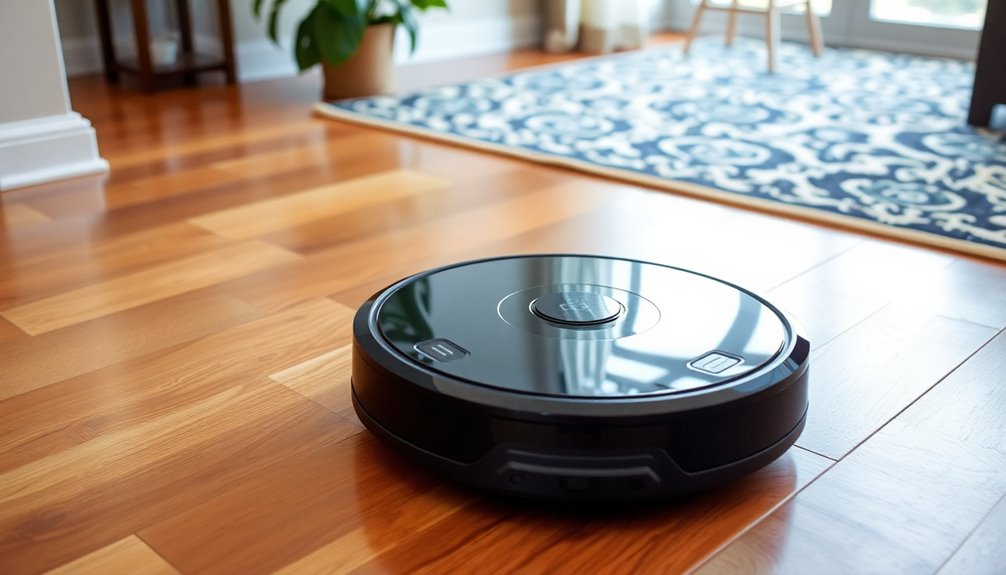
Using your robot vacuum on recommended surfaces greatly enhances its cleaning efficiency and durability. Each robot vacuum model is designed with specific floor types in mind, and understanding these surfaces is vital for peak performance. For instance, if you've invested in a vacuum engineered for hardwood floors, you'll notice that it effectively picks up dust and debris without damaging the delicate finish of your flooring. This targeted design guarantees that your vacuum operates within its capabilities, minimizing wear and tear.
Conversely, when utilizing your robot vacuum on various carpet types, it's important to take into account the vacuum's suction power and brush design. Some models are adept at handling plush carpets, while others may struggle with low-pile varieties. By adhering to the manufacturer's guidelines regarding suitable surfaces, you prevent unnecessary strain on the motor and components, ultimately prolonging the life of your device.
Moreover, using your vacuum on surfaces it's not intended for can lead to malfunctions or inefficient cleaning. For example, if a vacuum meant for hardwood is used on thick carpets, it might become overwhelmed, resulting in overheating or mechanical failure.
To foster a sense of belonging among fellow robot vacuum users, share your experiences and learnings about surface compatibility. By following these recommendations, you'll not only maintain your vacuum's functionality but also enhance your home's cleanliness, allowing you to enjoy a well-kept environment with ease.
Frequently Asked Questions
How Often Should I Replace the Vacuum's Brushes?
You should replace your vacuum's brushes every six months or sooner if you notice signs of wear.
Regular brush maintenance is essential for peak performance. If the bristles appear frayed or tangled, it's time for a brush replacement.
Keeping an eye on your brushes not only guarantees effective cleaning but also prolongs the life of your vacuum.
Can I Use My Robot Vacuum Outdoors?
Using your robot vacuum outdoors is like sending a delicate flower into a storm.
Most robot vacuums aren't designed for outdoor surfaces, as they can struggle with dirt, debris, and moisture. This can compromise vacuum durability and performance.
If you want to keep your vacuum thriving, stick to indoor use where it can efficiently navigate and clean without facing the elements.
Preserve its lifespan by respecting its intended environment.
What Surfaces Should I Avoid With My Vacuum?
You should avoid using your robot vacuum on hardwood floors with unsealed finishes, as it may cause scratches over time.
Additionally, steer clear of shag carpets; their long fibers can entangle the vacuum's brushes, leading to performance issues.
By recognizing these surfaces, you can maintain your vacuum's efficiency and protect your flooring investments.
Choosing the right surfaces guarantees your cleaning experience is both effective and considerate of your home's needs.
Are There Specific Cleaning Solutions for Robot Vacuums?
Cleaning solutions for your robot vacuum are like the fuel that keeps a car running smoothly.
You should avoid harsh chemicals, as they can damage the sensors and components. Instead, opt for mild, non-toxic cleaners specifically designed for robot maintenance.
Always check the manufacturer's guidelines to ascertain compatibility. Using the right cleaning solutions not only enhances performance but also prolongs the lifespan of your device, guaranteeing it stays part of your home for longer.
How Can I Troubleshoot Charging Issues With My Vacuum?
If you're facing charging issues, start by checking the charging dock for debris or damage.
Verify the contacts are clean and properly aligned with your vacuum.
Battery maintenance is vital; make certain your battery isn't old or defective.
Test the dock with another vacuum if possible.
If your vacuum still won't charge, consider resetting it.
These steps can help you diagnose and resolve the charging problems effectively.
Conclusion
By following these simple maintenance tips, you can greatly extend your robot vacuum's life, ensuring it serves you well for years. Think of it as nurturing a delicate garden; with regular care and attention, it flourishes and thrives. Keeping the brushes clean, filters maintained, and dustbins emptied not only boosts performance but also saves you money in the long run. So, treat your robot vacuum right, and it'll be your diligent cleaning companion for many seasons to come.





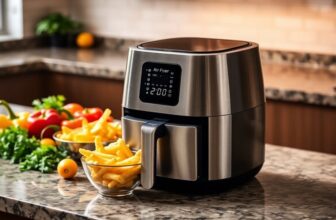


 Wishlist
Wishlist